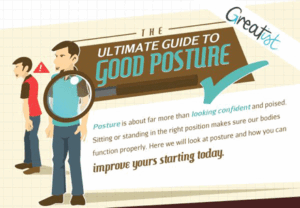When Is It Tendinitis?
Tendinitis is one of the most common diagnoses for soft tissue pain resulting from repetitive motion. As repetitive motion disorders have dramatically increased, so has the incidence of tendinitis.
However, recent investigations into the cellular nature of tendon pathologies have brought forth interesting discoveries that may alter the way tendinitis is treated. In this month’s column, let’s take a look at some of these fascinating discoveries.
The first stop along the way is to take a closer look at the anatomical and biomechanical characteristics of tendons. Tendons are connective tissue structures that are primarily composed of collagen and elastin fibers. Collagen fibers primarily give the tendon its strength, and elastin fibers give it a small amount of flexibility.
Since the tendon fibers are primarily designed to transmit a strong tensile (pulling) load from the muscle directly to the bone, the tendon is not designed to be very flexible. If it were very flexible, much of the muscle’s contraction force would be absorbed by the tendon and not transmitted to the bone. It would be like trying to pull a heavy object across the floor with a bungee cord instead of a rope.
The tendon gets its strength not only from the quantity of collagen fibers it contains, but also from the arrangement of the fibers. In tendons, the collagen fibers are arranged mostly in a parallel direction, in line with the direction of the muscle fibers. This arrangement will give the tendon the greatest amount of strength in the direction that the muscle fibers are pulling. Ligaments, on the other hand, have a greater quantity of elastin. In ligaments, the collagen fibers are arranged in a slightly more random fashion to give the ligament strength against forces in several different directions.
Tendons throughout the body are surrounded by a thin connective tissue membrane called the paratenon. The paratenon is primarily designed to reduce friction forces between the tendon and other surrounding structures.7
Tendons in areas such as the distal extremities are exposed to much higher friction forces, as the tendons bend around the joints and are held closely by retinacula. These tendons are surrounded by an additional connective tissue layer called the epitenon. The epitenon is commonly referred to as the tendon sheath. Keep in mind that not all tendons have the tendon sheath, only those exposed to specifically high friction forces against adjacent structures, like a binding retinaculum. In some instances, an inflammatory condition will develop between the tendon and its sheath. This usually occurs from excessive friction. Adhesions may also develop between the tendon and the sheath. This condition is called tenosynovitis. However, in order for tenosynovitis to be present, the tendon in question must have an epitenon (sheath).
In some instances a diagnosis of tenosynovitis may be made because of an observed fibrous adhesion between the tendon and the paratenon but there is no tendon sheath. This happens commonly with the Achilles tendon.3 It does not have a synovial sheath (epitenon) but its paratenon is quite visible. Degeneration or adhesion of the paratenon or tendon fibers in this instance is not tenosynovitis. For many years, the term tendinitis has been used to describe painful overuse conditions of the tendon. It has been thought that the pathology involved the tearing of individual tendon fibers and a subsequent inflammatory response in the tendon. Treatment, therefore, has focused on the inflammatory nature of the problem. However, a number of recent scientific investigations into the nature of overuse tendon injuries have painted a very different picture.1,2,5,6
In these investigations, most tendinitis complaints have been found to be devoid of inflammatory cells. It appears that tendon fiber tearing is not the primary part of the problem. The main problem in these overuse tendon disorders appears to be collagen degeneration from overuse. It has also been suggested that this would explain the frequent lack of success in treating tendinitis complaints with anti-inflammatory medication. Numerous authors and clinicians have suggested that the term “tendinosis” (literally meaning “pathology of the tendon”) is a much more appropriate term than “tendonitis,” which specifically indicates inflammation.
So what does this mean for the treatment of tendinitis with massage? The good news is that these findings are an even stronger support for the benefits of massage for treating these overuse tendon injuries. Collagen degeneration is a primary part of most tendinosis pathology. Therefore, what is needed is a treatment that can help stimulate collagen production in the healing process.
Interestingly, several recent studies have found that the primary benefits of deep friction massage may be the stimulation of collagen production in damaged tendon fibers, rather than the breaking up of fibrous scar tissue in chronically inflamed tendons as previously thought.4 We have known clinically for years that massage works well in the treatment of tendinosis; now we may be closer to understanding why.
References:
- Almekinders, L. C. and J. D. Temple. Etiology, diagnosis, and treatment of tendinitis – an analysis of the literature. Med Sci Sport Exercise. 30:1183-1190, 1998.
- Astrom, M. and A. Rausing. Chronic Achilles tendinopathy. A survey of surgical and histopathologic findings. Clin Orthop:151-164, 1995.
- Cailliet, R. Foot and Ankle Pain. 2nd ed. Philadelphia: F.A. Davis Company, 1983.
- Gehlsen, G. M., L. R. Ganion, and R. Helfst. Fibroblast responses to variation in soft tissue mobilization pressure. Med Sci Sport Exercise. 31:531-535, 1999.
- Khan, K. M., J. L. Cook, F. Bonar, P. Harcourt, and M. Astrom. Histopathology of common tendinopathies – Update and implications for clinical management. Sport Med. 27:393-408, 1999.
- Khan, K. M., J. L. Cook, J. E. Taunton, and F. Bonar. Overuse tendinosis, not tendinitis – Part 1: A new paradigm for a difficult clinical problem. Physician Sportsmed. 28:38+, 2000.
- Nordin, M. and V. Frankel. Basic Biomechanics of the Musculoskeletal System. 2nd ed. Malvern: Lea & Febiger, 1989.
Ready to #feelbetter?
You're just a click away from a wicked good massage!
-

60 Minute Massage Gift Card
$170.00 Add to cart -

90 Minute Massage Gift Card
$255.00 Add to cart -

Mini Aer Small Room Air Purifier
$149.00 Add to cart -
Sale!

Thera-Pearl Sports Pack/Hot Cold
Original price was: $14.99.$12.99Current price is: $12.99. Add to cart -

3 Somadome Sessions Gift Card
$135.00 Add to cart -

TheraBand CLX Connective Loop
$14.99 Select options -

6 Somadome Sessions Gift Card
$270.00 Add to cart -
Sale!

Biofreeze
Original price was: $14.99.$12.99Current price is: $12.99. Add to cart
Passion Mountain
I was at an event recently and was asked by somebody how I could STILL be so passionate for what I do. He said, “What I mean is that you talk about what you do with the passion of child flipping through a new pack of baseball cards. I wish I was that passionate about…
Read MoreFish You Should Scale Back On
New Englander’s love their seafood and we deepen our love affair every summer when our favorite crustaceans, ‘lobstah’ is a plentiful. But what is the best seafood for us and what are the ones that we should be staying away from regardless of how yummy they may be? Monterey Bay Aquarium has combined data from…
Read MoreSports are a Great Metaphor
It’s no secret that my life has always revolved around athletics. From my early days playing pop warner football, through my college years of lacrosse and on into the various community leagues since, being part of a team has always been where I feel most comfortable. What I enjoy most about being part of a…
Read MoreWhat is an Expert?
“An expert is someone widely recognized as a reliable source of technique or skill whose faculty for judging or deciding rightly, justly, or wisely is accorded authority and status by their peers or the public in a specific well-distinguished domain.” – Wikipedia This past month I flew to Atlanta to present a few classes in…
Read MoreThe Power of a Hug
Originally Posted 5/1/2014; following the 1 year anniversary of the Boston Marathon Bombings and our mission to rebound after these horrible attacks on our city. We helped orchestrate the ‘One Run for Boston’; a 3328.2 NON-STOP running relay from LA to Boston, raising over $500K for the victims and survivors of the events of 4/20/2013.…
Read MoreTips from the Table
Without fail, every marathon season, I am asked by my patients, what kind of advice I would offer up to them as they prepare to run the Boston marathon. I first admit that I have never (nor will ever) run a marathon, but given my unique insight of spending 1000’s of hours alone in a…
Read MoreShoulder Impingement
The glenohumeral joint is a highly complex articulation. It has the greatest range of motion of any joint in the body. However, its increased motion occurs at the expense of stability, requiring the soft tissues to play a more critical role in maintaining joint integrity. As a result of increased mechanical demands, numerous soft-tissue injuries…
Read MoreTrain, train, train. Train of fools.
In my seventeen years as a massage therapist, I am still amazed by some of the things I see in my office. Being situated 1/10th of a mile from the finish line of one of the most prestigious marathons in the world, the Boston Marathon, we see more than our fair share of runners coming…
Read MoreAchilles Tendon Disorder
Achilles Tendon Disorder Massage therapists see many clients with active lifestyles. Running, jumping, dancing, climbing, or any number of other activities can put serious stress on the Achilles tendon (AT). AT disorders also can contribute to biomechanical disorders in the foot and lower extremity. That is why it is important for the massage practitioner to…
Read More


